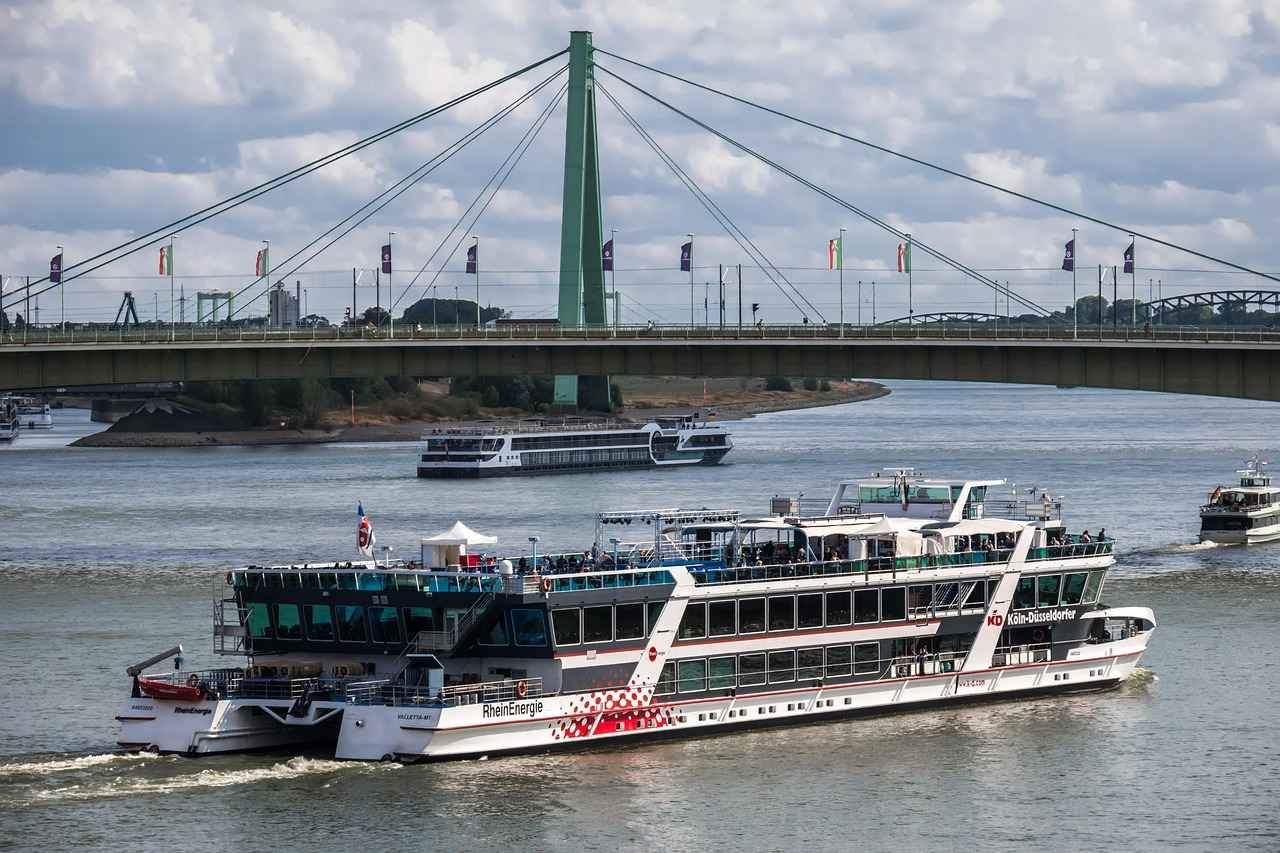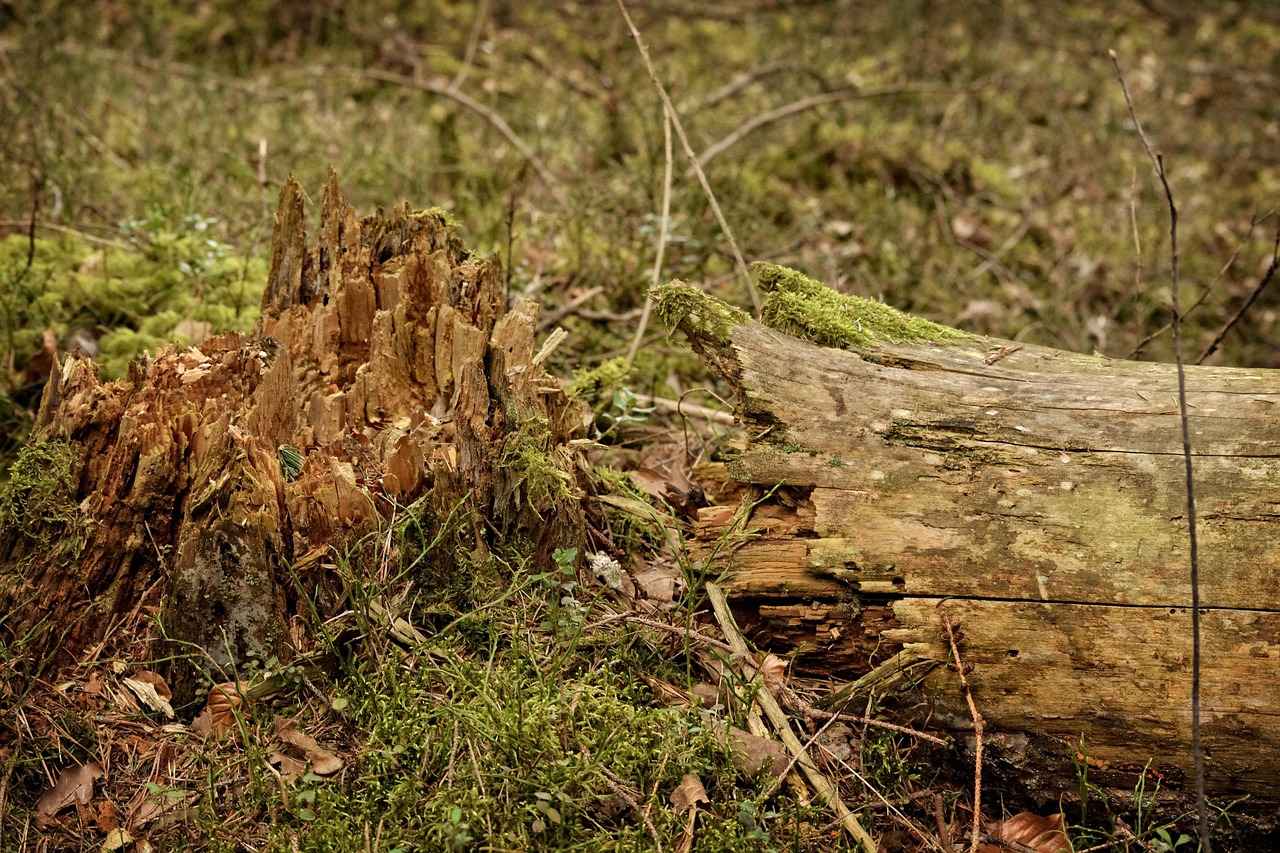This article provides essential tips and guidelines for safely shipping plants, ensuring they arrive healthy and thriving at their destination. Learn the best practices for plant packaging and shipping.
Understanding the significance of proper plant shipping is crucial for maintaining plant health. Incorrect methods can lead to damage, stress, or even plant death during transit. Ensuring that plants are shipped correctly can make a significant difference in their ability to survive and flourish in their new environment.
Choosing the right packaging materials is vital for protecting plants. Explore the best options that provide adequate support and prevent damage during transportation:
- Cardboard Boxes: Cardboard boxes are commonly used for shipping plants. They offer sturdy protection and can be customized for various plant sizes, ensuring a snug fit during transit.
- Bubble Wrap: Bubble wrap provides cushioning that absorbs shocks and impacts. Wrapping delicate plants in bubble wrap can significantly reduce the risk of breakage or damage.
- Plant Sleeves: Plant sleeves are an excellent option for smaller plants. They provide sufficient protection while allowing for ventilation, which is essential during transport.
Different plant species have unique shipping requirements. Understanding these can help ensure that each plant type is shipped in the best possible condition:
- Shipping Succulents and Cacti: Succulents and cacti have specific moisture requirements. Learn how to package these plants to prevent overwatering and ensure they arrive healthy.
- Shipping Tropical Plants: Tropical plants often require extra care due to their sensitivity to temperature changes. Discover tips for maintaining ideal conditions during transit.
Selecting a reliable shipping carrier is essential for timely and safe delivery. Evaluate options based on their experience with live plant shipments:
- Understanding Shipping Options: Different shipping methods can impact delivery time and plant health. Compare express and standard shipping to find the best fit for your needs.
- Assessing Carrier Policies on Live Plants: Not all carriers have the same policies regarding live plants. Research and understand these policies to avoid potential issues during shipping.
Shipping plants may involve legal regulations depending on the destination. Familiarize yourself with these laws to ensure compliance and avoid penalties:
- Understanding USDA Regulations: The United States Department of Agriculture (USDA) has regulations governing the shipment of plants. Learn about necessary permits and inspections to comply with federal laws.
- State-Specific Plant Shipping Laws: Individual states may have their own regulations regarding plant shipments. Research state-specific laws to ensure that your shipment is legal and compliant.
Effective tracking and management can help ensure your plants arrive safely. Discover tools and techniques for monitoring your shipments throughout the process:
- Using Tracking Numbers: Most carriers provide tracking numbers that allow you to monitor your shipment’s progress. Learn how to effectively use these numbers for peace of mind.
- Communicating with Recipients: Keeping communication open with recipients can help manage expectations and address any issues that arise during transit. Explore best practices for effective communication.
By following these guidelines, you can ensure that your plants are well-prepared for their journey, arriving at their destination in optimal condition. With the right knowledge and practices, shipping plants can be a smooth and successful process.

Why Is Proper Plant Shipping Important?
Understanding the significance of proper plant shipping is crucial for maintaining plant health. The journey from the nursery to the final destination can be fraught with challenges, and the methods used during shipping can profoundly affect the well-being of the plants. Incorrect shipping techniques can lead to a range of issues, including physical damage, stress, or even plant death during transit.
When plants are not packaged appropriately, they may experience bruising, which can cause long-term damage. For instance, if a plant is jostled around too much, it can suffer from broken stems or leaves, which may hinder its growth once it reaches its new home. Additionally, exposure to extreme temperatures can lead to thermal shock. Plants that are sensitive to cold or heat can succumb to these conditions if not properly insulated.
Moreover, stress factors during shipping can compromise a plant’s immune system, making it more susceptible to diseases and pests. A plant that arrives in a stressed state might also take longer to acclimate to its new environment, delaying its growth and overall health.
Another critical aspect of proper plant shipping is the moisture level. Plants require a specific amount of moisture to thrive, and if they are too dry or overly wet during transit, it can lead to issues such as root rot or desiccation. Therefore, understanding the moisture requirements of different plant types is essential for successful shipping.
Furthermore, proper shipping practices can enhance the overall customer experience. When customers receive healthy, vibrant plants, they are more likely to return for future purchases and recommend the service to others. This can significantly impact a business’s reputation and sales.
In summary, proper plant shipping is not just about getting plants from point A to point B. It involves a comprehensive understanding of the plants’ needs and the challenges they face during transit. By prioritizing plant health through careful shipping practices, one can ensure that plants arrive at their destination in excellent condition, ready to thrive.
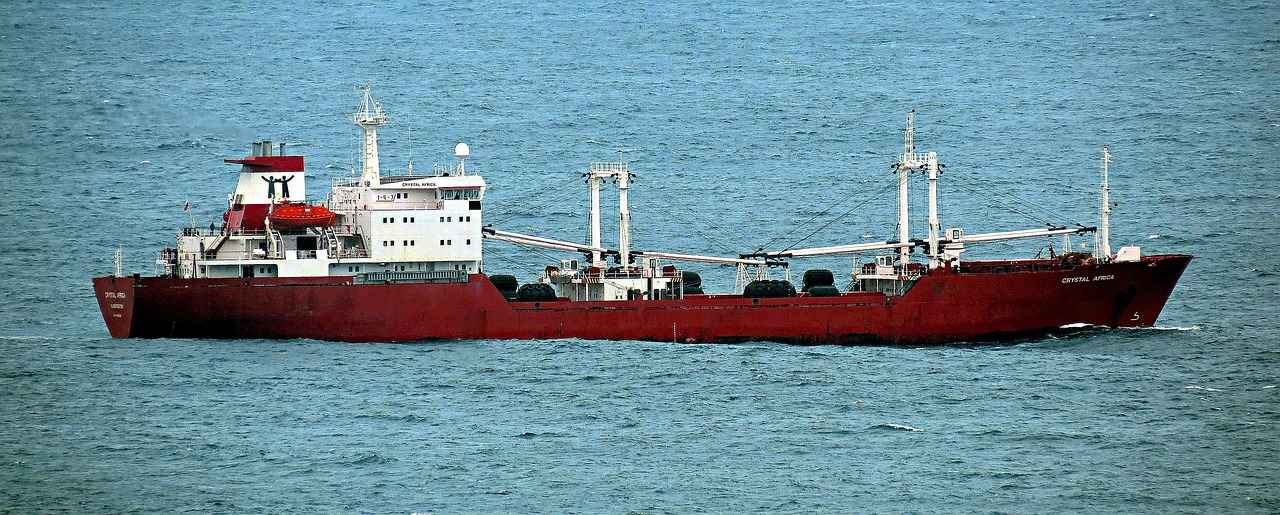
What Are the Best Packaging Materials for Shipping Plants?
When it comes to ensuring that your plants arrive at their destination in optimal condition, the choice of packaging materials is of utmost importance. Proper packaging not only protects the plants from physical damage but also helps maintain their health and vitality during transit. In this section, we will explore the best packaging materials available for shipping plants and the reasons why each option is effective.
Choosing the right packaging materials is vital for protecting plants. The correct materials can provide adequate support and prevent damage during transportation. Plants are living organisms that can be sensitive to environmental changes, and improper packaging can lead to stress, dehydration, or even death.
- Cardboard Boxes: Cardboard boxes are a popular choice for shipping plants due to their sturdy protection. They can be customized to fit various plant sizes, ensuring a snug fit that minimizes movement during transit.
- Bubble Wrap: This material provides excellent cushioning, absorbing shocks and impacts. Wrapping delicate plants in bubble wrap can significantly reduce the risk of breakage or damage.
- Plant Sleeves: Ideal for smaller plants, plant sleeves offer sufficient protection while allowing for ventilation. This is crucial for maintaining moisture levels during transport.
- Foam Peanuts: These lightweight materials can fill empty spaces in boxes, preventing plants from shifting. They are especially useful for fragile plants that require extra support.
- Plastic Containers: For plants that are potted, using durable plastic containers can help retain moisture and keep the soil intact. Ensure that the containers have drainage holes to prevent water accumulation.
Before placing your plants into the chosen packaging, it is essential to prepare them properly. Here are some tips:
- Water the plants a day before shipping to ensure they are hydrated but avoid overwatering.
- Prune any dead or damaged leaves to minimize the risk of disease.
- Secure the soil by wrapping it in plastic to prevent spillage.
In addition to the primary packaging materials, consider using:
- Moisture Packs: These can help maintain humidity levels inside the packaging, especially for tropical plants.
- Heat Packs: For shipping during colder months, heat packs can provide warmth and protect sensitive plants from frost.
Ultimately, the right combination of packaging materials will depend on the type of plants being shipped and the duration of transit. By investing time in selecting appropriate packaging, you can ensure that your plants arrive at their destination healthy and ready to thrive.
Using Cardboard Boxes
When it comes to shipping plants, is one of the most effective methods available. These boxes are not only durable but also versatile, making them suitable for a variety of plant sizes and types. In this section, we will explore the benefits of using cardboard boxes for shipping plants and provide tips on how to maximize their effectiveness.
Cardboard boxes are a preferred choice for many plant shippers due to their sturdy construction and ability to protect plants from external elements during transit. Here are some key reasons why cardboard boxes are ideal:
- Customizability: Cardboard boxes can be easily customized to fit different plant sizes, ensuring that each plant is snugly secured. This minimizes movement and reduces the risk of damage.
- Lightweight: Despite their strength, cardboard boxes are lightweight, which helps keep shipping costs down. This is particularly important for larger shipments.
- Eco-Friendly: Cardboard is recyclable, making it an environmentally conscious choice for shipping.
To ensure that your plants arrive at their destination in excellent condition, proper packing is essential. Follow these steps:
- Choose the Right Box Size: Select a box that is slightly larger than the plant’s pot to allow for cushioning materials.
- Use Protective Padding: Line the bottom of the box with packing peanuts, crumpled paper, or bubble wrap. This will absorb shocks and provide a stable base.
- Secure the Plant: Place the plant in the center of the box and fill any gaps with additional padding. This prevents the plant from shifting during transit.
- Seal the Box Properly: Use strong packing tape to securely seal all openings. Reinforce the corners for added protection.
While cardboard boxes offer many advantages, it’s important to consider a few additional factors:
- Ventilation: Ensure that the box has adequate ventilation to allow for air circulation. This is especially crucial for plants that may be sensitive to temperature changes.
- Labeling: Clearly label the box as “Live Plants” and include any special handling instructions. This helps carriers handle the package with care.
- Weather Considerations: Be mindful of the weather conditions during transit. If shipping during extreme temperatures, consider using insulated packaging to protect your plants.
In conclusion, cardboard boxes are a reliable and effective option for shipping plants. They provide sturdy protection, are customizable for different plant sizes, and are eco-friendly. By following the packing tips and considerations outlined above, you can ensure that your plants arrive at their destination healthy and thriving.
Benefits of Using Bubble Wrap
When it comes to shipping plants, ensuring their safety during transit is of utmost importance. One of the most effective materials for providing that necessary protection is bubble wrap. This versatile packaging solution offers a range of benefits that significantly enhance the shipping process for delicate plants.
- Cushioning and Shock Absorption: Bubble wrap is designed with air-filled bubbles that create a cushioning effect. This feature helps absorb shocks and impacts during transportation, reducing the risk of damage to the plants.
- Lightweight and Space-Efficient: Unlike other packaging materials, bubble wrap is lightweight, which helps keep shipping costs down. Its flexibility allows it to conform to various shapes and sizes, making it easy to wrap plants snugly without taking up excessive space.
- Moisture Control: While bubble wrap is not waterproof, it can provide a degree of moisture retention. Wrapping plants can help maintain humidity levels, which is particularly beneficial for plants that thrive in humid environments.
- Easy to Use: Bubble wrap is user-friendly, making it simple for anyone to wrap their plants effectively. Just cut the desired length, wrap it around the plant, and secure it with tape for a reliable protective layer.
- Protection from Environmental Factors: Bubble wrap can shield plants from temperature fluctuations and external elements, such as dust and dirt, that could harm them during transit.
To maximize the benefits of bubble wrap when shipping plants, it’s essential to follow some best practices:
- Wrap Each Plant Individually: For optimal protection, wrap each plant separately. This ensures that if one plant experiences damage, the others remain safe.
- Avoid Over-Wrapping: While it’s important to provide adequate cushioning, over-wrapping can lead to excessive moisture buildup, which may harm the plant. Aim for a balance.
- Secure the Wrap: Use packing tape or string to secure the bubble wrap around the plant, ensuring it stays in place during transit.
- Label Clearly: After wrapping, label the package clearly to indicate that it contains live plants. This helps handlers understand the contents and treat them with care.
In summary, bubble wrap is an invaluable tool when it comes to shipping plants safely. Its cushioning properties, lightweight nature, and ease of use make it an ideal choice for protecting delicate plants during their journey. By following best practices for wrapping and securing plants, you can significantly reduce the risk of damage and ensure they arrive at their destination healthy and thriving.
Choosing Appropriate Soil Types
When it comes to shipping plants, one of the most critical factors to consider is the type of soil used. The choice of soil not only affects the weight of the shipment but also plays a significant role in the health and vitality of the plants during transit. Proper soil selection can make a substantial difference in how plants cope with the stresses of shipping.
The soil type directly influences moisture retention, aeration, and nutrient availability. Using the right soil can help mitigate stress and damage that plants may experience during shipping. Lightweight and well-draining soils are essential as they reduce the overall weight of the package while ensuring that roots have enough air circulation.
- Lightweight: Soils that are light in weight help keep shipping costs down.
- Well-Draining: Good drainage prevents waterlogged conditions that can lead to root rot.
- Moisture Retention: While drainage is crucial, the soil should also retain some moisture to keep plants hydrated.
- Nutrient-Rich: A balanced mix of nutrients supports plant health during transit.
Several types of soil mixes are particularly effective for shipping plants:
1. Cactus Mix: Ideal for succulents and cacti, this mix is designed to drain quickly while providing the necessary nutrients.2. Potting Soil: A balanced potting mix can work well for many houseplants, offering a good balance of moisture retention and drainage.3. Peat-Based Mix: Peat moss is excellent for moisture retention and can be blended with perlite for improved drainage.4. Coir Fiber: An eco-friendly option, coir provides good aeration and moisture retention, making it suitable for a variety of plants.
Before packing plants, it’s crucial to prepare the soil properly:
- Moisten the Soil: Ensure the soil is slightly moist but not soggy to prevent damage during transit.
- Avoid Fertilizers: Do not add fertilizers before shipping, as they can burn roots if the plants are stressed.
- Secure the Soil: Use a plastic wrap or bag to secure the soil around the roots, preventing it from spilling during transportation.
When selecting soil for shipping, consider the following best practices:
- Research Plant Needs: Different plants have varying soil requirements; understanding these needs is essential.
- Test Soil Composition: Conduct tests to ensure that the soil mix meets the specific needs of the plants you are shipping.
- Consult Experts: Seek advice from gardening professionals or local nurseries to choose the best soil mix.
In conclusion, selecting the right soil type is crucial for the successful shipping of plants. A lightweight, well-draining soil not only reduces shipping costs but also ensures that plants remain healthy throughout their journey. By understanding the characteristics of suitable soils and implementing best practices for preparation, you can significantly enhance the chances of your plants arriving at their destination in peak condition.
Utilizing Plant Sleeves
When it comes to shipping plants, can be a game-changer, especially for smaller varieties. These protective coverings are designed to safeguard delicate plants during transit, ensuring they arrive in optimal condition. In this section, we will explore the benefits of plant sleeves, their functionality, and how they enhance the shipping process.
Plant sleeves are lightweight, breathable coverings made from materials such as polypropylene or non-woven fabric. They serve several critical purposes:
- Protection from Physical Damage: Plant sleeves shield plants from physical impacts and abrasions that can occur during shipping. This is particularly important for fragile leaves and stems.
- Ventilation: Unlike traditional plastic wraps, plant sleeves allow for air circulation, which is essential for maintaining the plant’s health. Proper ventilation helps prevent moisture buildup and reduces the risk of mold.
- Temperature Regulation: The breathable nature of plant sleeves aids in temperature control, protecting plants from extreme heat or cold during transit.
Using plant sleeves correctly can maximize their benefits:
- Select the Right Size: Ensure that the plant sleeve fits snugly around the plant without being too tight. This allows for adequate protection while not restricting growth.
- Secure the Sleeve: Use ties or clips to secure the sleeve at the base of the plant. This prevents it from slipping off during transit.
- Monitor Moisture Levels: Before sealing the sleeve, check the moisture levels of the soil. If the soil is too wet, it can lead to root rot. Conversely, if it’s too dry, the plant may suffer during transport.
While there are various methods to package plants for shipping, plant sleeves offer unique advantages:
- Lightweight: Plant sleeves are significantly lighter than traditional packaging materials, which helps reduce shipping costs.
- Eco-Friendly: Many plant sleeves are made from recyclable materials, making them a more sustainable choice compared to plastic.
- Cost-Effective: Plant sleeves are often more affordable than other protective packaging options, making them accessible for both small and large-scale shippers.
To ensure successful shipping with plant sleeves, consider the following best practices:
- Combine with Other Packaging: For added protection, consider using plant sleeves in conjunction with cardboard boxes or bubble wrap. This combination can provide extra cushioning.
- Label Clearly: Always label packages containing plants as “Live Plants” to inform carriers of their delicate nature.
- Choose the Right Shipping Carrier: Select a carrier experienced in handling live plant shipments to minimize the risk of delays or mishaps.
In conclusion, plant sleeves are an invaluable tool for anyone looking to ship smaller plants safely and effectively. By providing essential protection, allowing for ventilation, and being cost-effective, they are an excellent choice for ensuring that plants arrive at their destination healthy and thriving.

What Are the Best Practices for Shipping Different Types of Plants?
When it comes to shipping plants, understanding the unique requirements of different species is crucial for their survival and health during transit. Different plant species have unique shipping requirements. This means that what works for one type of plant may not be suitable for another. By gaining insight into these specific needs, you can ensure that each plant type is shipped in the best possible condition, minimizing stress and potential damage.
Plants vary widely in their structure, moisture needs, and sensitivity to environmental changes. For instance, succulents thrive in dry conditions, while tropical plants prefer humidity. Understanding these differences is essential to select the right packaging and shipping methods. Each plant type may require specific care to maintain its health and vitality while in transit.
- Minimize Watering: Before shipping, ensure that succulents and cacti are dry. Overwatering can lead to rot during transport.
- Use Breathable Packaging: Packing these plants in breathable materials allows for air circulation, reducing the risk of mold.
- Secure with Padding: Use bubble wrap or newspaper to cushion the plants, preventing movement and potential damage.
- Temperature Control: Tropical plants are sensitive to temperature fluctuations. Use insulated packaging or heat packs to maintain warmth during colder months.
- Humidity Maintenance: Including a damp sponge or moss in the packaging can help retain moisture, which is vital for these plants.
- Shield from Light: Covering the plants with a light-blocking material can prevent sunburn during transit.
Flowering plants often require special attention to ensure that blooms do not wilt or break during transit. Here are some best practices:
- Trim Excess Foliage: Reducing the amount of foliage can minimize the risk of damage and dehydration.
- Support Stems: Use stakes or cardboard to support tall stems and prevent them from bending or breaking.
- Careful Timing: Ship during cooler parts of the day to reduce stress on the plants.
Proper packaging is critical to ensure safe delivery. Here are some tips:
- Choose the Right Box: Use sturdy cardboard boxes that can withstand pressure and are the right size for your plants.
- Label Clearly: Ensure that the package is labeled as containing live plants, and include care instructions for the recipient.
- Consider Shipping Duration: Choose shipping methods that minimize transit time, especially for sensitive species.
To ensure successful delivery, avoid these common pitfalls:
- Overpacking: While it’s important to protect plants, too much packing can cause crushing.
- Ignoring Weather Conditions: Always consider the weather forecast and choose appropriate shipping methods accordingly.
- Neglecting Local Regulations: Be aware of any shipping restrictions or regulations for plants in your destination area.
By following these best practices tailored to specific plant types, you can enhance the chance of your plants arriving at their destination healthy and thriving. Understanding their unique needs and taking the necessary precautions can make all the difference in successful plant shipping.
Shipping Succulents and Cacti
requires a careful approach to ensure these unique plants remain healthy during transit. Both succulents and cacti are adapted to arid environments, which means they have specific moisture needs that must be considered when preparing them for shipping. Improper handling can lead to overwatering or dehydration, both of which can jeopardize the plants’ health.
Succulents and cacti thrive in dry conditions, making it essential to manage their moisture levels before shipping. Overwatering can lead to root rot, while insufficient moisture can cause wilting. To prepare these plants for shipment:
- Watering Schedule: Water the plants a few days before shipping to allow excess moisture to evaporate. This ensures that the soil is only slightly moist, reducing the risk of overwatering.
- Soil Type: Use a well-draining soil mix specifically designed for succulents and cacti. This type of soil helps prevent excess moisture retention during transport.
Proper packaging is crucial for protecting succulents and cacti during transit. Here are some effective strategies:
- Use Sturdy Containers: Choose pots that provide adequate support and prevent breakage. Ensure they are not too heavy, as this can complicate shipping.
- Wrap with Care: Utilize bubble wrap or packing paper to cushion the plants. Wrap the pots securely, allowing for some air circulation to prevent moisture buildup.
- Secure the Soil: To minimize soil spillage, consider placing a piece of plastic wrap over the soil surface before packaging. This helps keep the soil intact and reduces mess.
When selecting a shipping method for succulents and cacti, consider the following:
- Speed of Delivery: Opt for express shipping when possible. This minimizes the time the plants spend in transit, reducing stress and the risk of damage.
- Weather Conditions: Monitor the forecast for both the shipping and receiving locations. Extreme temperatures can harm your plants, so choose shipping times wisely.
Effective communication is key to ensuring the recipient is prepared for the arrival of their plants. Inform them about:
- Care Instructions: Provide detailed care instructions to help them acclimate the plants to their new environment.
- Tracking Information: Share tracking details so they can monitor the shipment’s progress and be ready to receive it promptly.
By understanding the specific moisture needs of succulents and cacti, utilizing appropriate packaging techniques, and choosing the right shipping method, you can ensure that these resilient plants arrive at their destination healthy and thriving. Remember, the key to successful plant shipping lies in preparation and communication.
Shipping Tropical Plants
can be a delicate process, requiring special attention to their unique needs. These plants thrive in warm, humid environments and are particularly sensitive to temperature fluctuations. Ensuring their safe transit involves several key strategies that can help maintain their health and vitality until they reach their new home.
Tropical plants are accustomed to stable conditions, and any significant changes in temperature or humidity can cause stress. This stress can lead to issues such as leaf drop, wilting, or even death. Therefore, understanding their specific requirements is essential for successful shipping.
- Temperature Control: Aim to keep tropical plants within a temperature range of 65°F to 80°F during transit. Use insulated boxes or thermal blankets to help regulate temperature.
- Humidity Maintenance: Tropical plants prefer high humidity. Consider using a damp sponge or moisture-retaining materials in the packaging to maintain humidity levels.
- Proper Packing: Use breathable materials like biodegradable packing peanuts or shredded paper to cushion the plants. Avoid plastic wraps that can trap moisture and lead to mold.
Before shipping, it’s crucial to prepare tropical plants adequately:
- Watering: Water the plants a day before shipping to ensure they are hydrated but not overly wet. This helps prevent root rot during transit.
- Pruning: Trim any dead or damaged leaves to minimize the risk of disease spread and to help the plant adapt to its new environment more easily.
- Secure Packaging: Ensure that the plants are securely packed to prevent movement. Use cardboard dividers for larger plants to keep them stable.
When selecting a shipping method, consider the following:
- Express Shipping: This is often the best option for tropical plants, as it minimizes transit time and exposure to adverse conditions.
- Carrier Experience: Choose a shipping carrier with experience in handling live plants. This ensures they understand the specific needs of tropical plants.
Once your tropical plants are shipped, monitoring their progress is essential:
- Tracking Numbers: Most carriers provide tracking numbers. Use these to keep an eye on your shipment’s location and estimated delivery time.
- Recipient Communication: Inform the recipient about the expected delivery time and any special care instructions to follow upon arrival.
By following these guidelines, you can ensure that your tropical plants arrive at their destination healthy and thriving. Proper care during shipping not only enhances the recipient’s experience but also contributes to the overall success of your plant shipping endeavors.
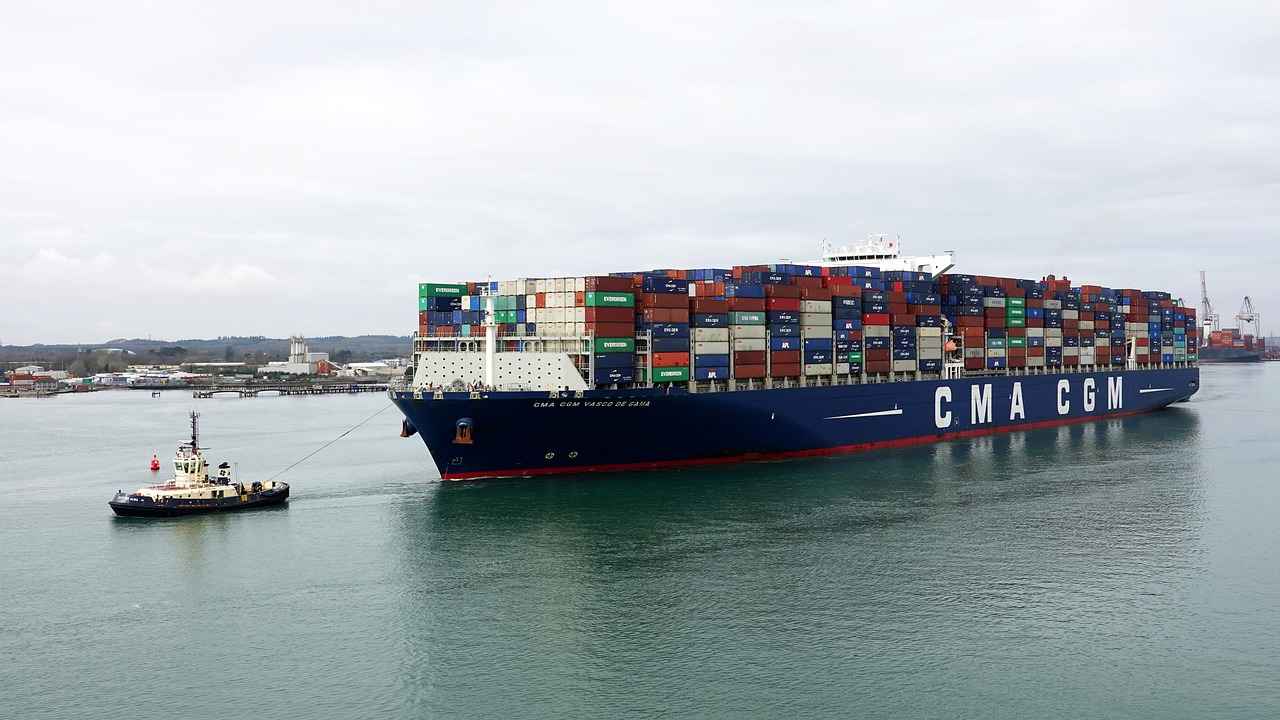
How to Choose the Right Shipping Carrier for Plants?
Choosing the right shipping carrier for your plants is a critical step in ensuring their safe and timely delivery. With the unique requirements of live plants, it’s essential to select a carrier that understands these needs. Here are some vital considerations when evaluating shipping carriers:
- Experience with Live Plant Shipments: Not all carriers have the same level of experience with shipping live plants. Look for carriers that specialize in this area, as they will be more familiar with the best practices to keep your plants healthy during transit.
- Reputation and Reviews: Research customer reviews and testimonials to gauge the reliability of potential carriers. A carrier with a strong reputation for handling live shipments will likely provide better service.
- Shipping Options: Different carriers offer various shipping methods, including express and standard options. Assess which method aligns best with your timeline and the type of plants you are shipping. For example, delicate tropical plants may require faster shipping to avoid temperature fluctuations.
Assessing Carrier Policies on Live Plants
Before selecting a carrier, it’s crucial to understand their specific policies regarding live plant shipments. Some carriers may have restrictions on the types of plants they will transport or may require special packaging. Here are some questions to consider:
- Does the carrier have specific guidelines for packaging live plants?
- Are there any restrictions on the types of plants that can be shipped?
- What are the carrier’s policies on temperature control during transit?
Understanding Shipping Costs
Shipping costs can vary significantly between carriers, influenced by factors such as distance, shipping speed, and package weight. It’s essential to obtain quotes from multiple carriers to compare prices. Additionally, consider any potential hidden fees that may arise, such as insurance for high-value plants.
Tracking and Support Services
Reliable tracking services are essential for monitoring your shipment’s progress. Ensure that the carrier you choose provides tracking numbers and updates throughout the shipping process. Furthermore, consider the level of customer support available. In case of any issues, having access to knowledgeable customer service representatives can make a significant difference.
Environmental Considerations
As sustainability becomes increasingly important, consider choosing a carrier that prioritizes eco-friendly practices. Some carriers offer carbon-neutral shipping options or use sustainable packaging materials, which can be a selling point for environmentally conscious customers.
Final Thoughts
In summary, selecting the right shipping carrier for plants involves careful consideration of their experience, policies, costs, and support services. By taking the time to evaluate your options, you can ensure that your plants arrive at their destination in optimal condition. Remember, a reliable carrier not only safeguards your plants but also enhances customer satisfaction, contributing to the success of your shipping endeavors.
Understanding Shipping Options
When it comes to shipping plants, the choice of shipping method can significantly affect both delivery time and plant health. Understanding the differences between express and standard shipping is essential for ensuring that your plants arrive in optimal condition.
Express shipping is often the preferred choice for those looking to minimize transit time. This method typically guarantees faster delivery, often within 1-2 days, which can be crucial for sensitive plants that may not withstand prolonged shipping times. On the other hand, standard shipping may take anywhere from 3 to 7 days, depending on the destination. While it is usually more cost-effective, it poses a greater risk for plants that are sensitive to temperature changes or prolonged periods without water.
Delivery time is a critical factor that can impact plant vitality. Prolonged shipping can lead to stress, wilting, or even death in some species. For instance, tropical plants are particularly vulnerable; they thrive in stable, warm conditions and can suffer if exposed to cold temperatures for too long. Conversely, succulents and cacti, which are more resilient, may tolerate longer shipping durations but still require careful packaging to prevent damage.
- Faster Delivery: Reduced transit time minimizes stress and potential damage.
- Better Temperature Control: Shorter shipping times help maintain optimal conditions.
- Enhanced Tracking: Many express services offer real-time tracking, allowing you to monitor your shipment closely.
Standard shipping can be a suitable option for hardier plants or when budget constraints are a concern. If you are shipping plants that can tolerate longer durations without adverse effects, such as certain succulents or hardy perennials, standard shipping may suffice. However, it is essential to ensure that the plants are well-packaged to withstand the journey.
When deciding between express and standard shipping, consider the following factors:
- Plant Type: Assess the specific needs of the plants you are shipping. Sensitive varieties may require express shipping.
- Distance: Longer distances may necessitate faster shipping methods to ensure plant health.
- Budget: Weigh the costs associated with each shipping option against the potential risks to plant health.
Regardless of the shipping method chosen, proper packaging is vital. For express shipping, consider using insulated boxes and moisture-retaining materials to protect plants from temperature fluctuations. For standard shipping, ensure that plants are securely packed and cushioned to prevent movement and damage during transit.
In conclusion, understanding the implications of your shipping method is crucial for maintaining the health of your plants. Whether you opt for express or standard shipping, taking the time to consider the specific needs of your plants and employing effective packaging techniques will help ensure a successful delivery.
Assessing Carrier Policies on Live Plants
When it comes to shipping live plants, understanding the carrier policies is crucial. Not all shipping companies treat live plants the same way, and their specific guidelines can significantly impact the success of your shipment. In this section, we will explore the importance of researching these policies and provide insights to help you avoid potential issues during shipping.
Carrier policies dictate how plants are handled during transit, including temperature control, packaging requirements, and delivery timelines. Failure to comply with these policies can lead to delays, damage, or even the rejection of your shipment. Therefore, it is essential to understand these guidelines to ensure your plants arrive at their destination in optimal condition.
Researching carrier policies can seem overwhelming, but there are straightforward steps you can take:
- Visit Carrier Websites: Most carriers provide detailed information on their websites regarding live plant shipping policies.
- Contact Customer Service: If you have specific questions or concerns, reach out to the carrier’s customer service for clarification.
- Read Reviews: Look for feedback from other customers who have shipped plants to gain insights into their experiences.
When assessing carrier policies, pay attention to the following aspects:
- Temperature Control: Ensure the carrier can maintain appropriate temperatures, especially for sensitive species.
- Packaging Requirements: Some carriers may have specific guidelines on how to package plants to prevent damage.
- Delivery Times: Check if the carrier offers expedited shipping options, as faster delivery can minimize stress on the plants.
- Insurance Options: Consider whether the carrier offers insurance for live plants in case of loss or damage during transit.
Even with thorough research, you may encounter issues related to carrier policies:
- Policy Changes: Carriers may update their policies without notice, so it’s essential to stay informed.
- Restricted Plants: Some carriers may prohibit the shipment of certain plant species, so verify if your plants are allowed.
- Delayed Shipments: Weather conditions or logistical challenges can affect delivery times, impacting plant health.
To enhance the chances of successful plant shipping, consider the following tips:
- Choose the Right Carrier: Select a carrier known for its experience with live plant shipments.
- Plan Ahead: Schedule your shipment during favorable weather conditions to prevent temperature-related stress.
- Use Quality Packaging: Ensure that your plants are securely packed to withstand the rigors of transit.
In summary, understanding and assessing carrier policies on live plants is essential for successful shipping. By conducting thorough research and being aware of potential issues, you can ensure that your plants arrive healthy and thriving at their destination.
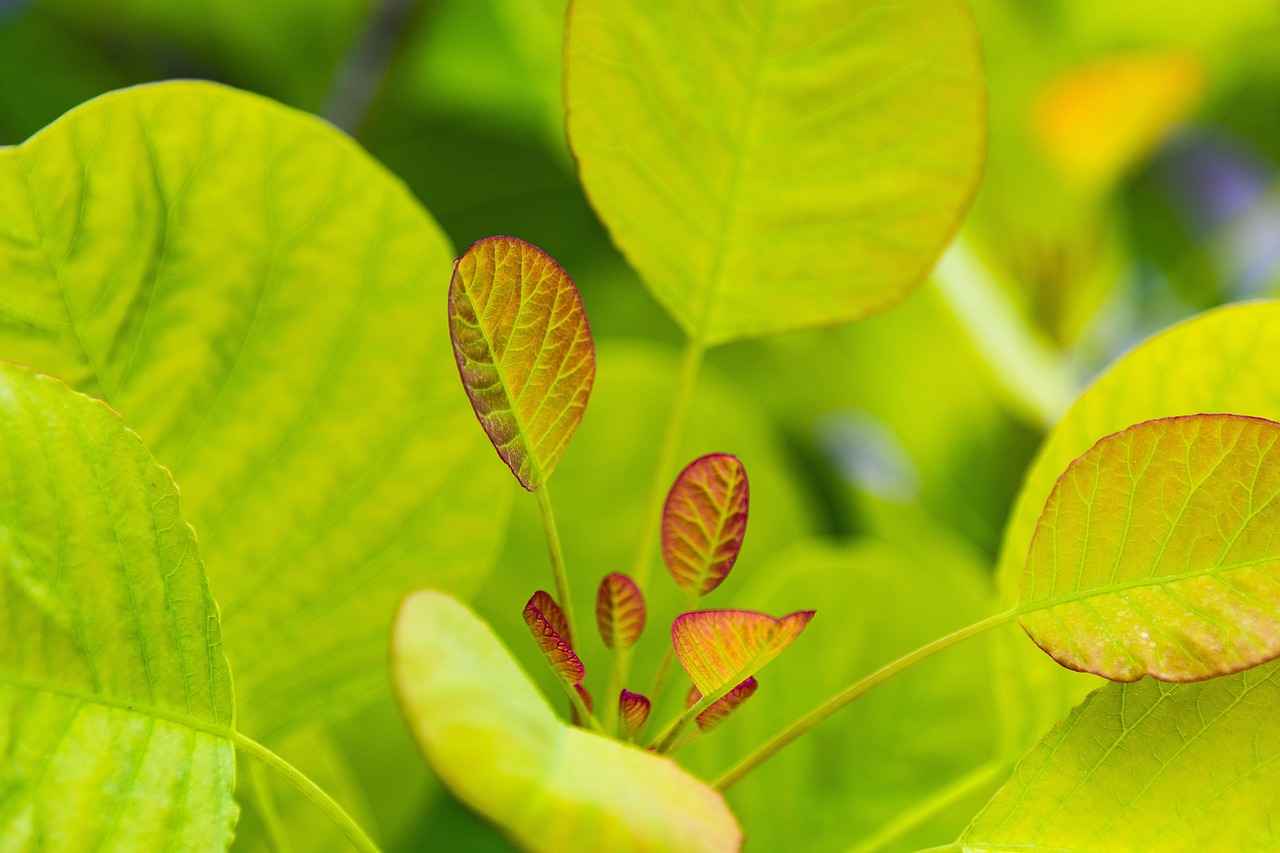
What Are the Legal Considerations for Shipping Plants?
When it comes to shipping plants, understanding the legal landscape is crucial. Different regions and countries have specific regulations that govern the transport of live plants. These laws are designed to protect local ecosystems from invasive species and diseases that could be introduced through plant shipments. Therefore, it is essential to familiarize yourself with these regulations to ensure compliance and avoid potential penalties.
Shipping plants legally requires adherence to a variety of regulations that can vary significantly based on the destination. The primary governing bodies overseeing these regulations include:
- United States Department of Agriculture (USDA): In the U.S., the USDA regulates the import and export of plants to prevent the spread of pests and diseases. This includes requiring phytosanitary certificates for certain plant shipments.
- State Departments of Agriculture: Each state may have its own specific regulations regarding the shipment of plants. For instance, some states may require additional permits or inspections.
- International Regulations: For international shipments, the Convention on International Trade in Endangered Species of Wild Fauna and Flora (CITES) regulates the trade of endangered species. Compliance with CITES is necessary when shipping certain plants across borders.
To comply with USDA regulations, it is essential to:
- Obtain a phytosanitary certificate that verifies your plants are free from pests and diseases.
- Ensure that your plants are not listed as prohibited species under federal or state regulations.
- Keep detailed records of your shipments, including the species, quantity, and destination.
Each state has its own set of rules that can affect how plants are shipped. For example:
- Some states may have restrictions on the importation of specific plant species that are considered invasive.
- Local regulations may require inspections by state agricultural officials before shipment.
- It is crucial to check with the state department of agriculture in both the shipping and receiving states to ensure compliance.
Failing to comply with legal regulations when shipping plants can lead to serious consequences, including:
- Seizure of the plants by customs or state authorities.
- Fines and penalties that can be substantial, depending on the severity of the violation.
- Damage to your reputation as a seller, leading to loss of customers and business opportunities.
Regulations regarding plant shipping can change frequently. To stay informed:
- Subscribe to updates from the USDA and state agricultural departments.
- Join industry associations that focus on horticulture and shipping practices.
- Attend workshops and webinars that cover the latest in plant shipping regulations.
In summary, understanding the legal considerations for shipping plants is vital for anyone involved in the trade of live plants. By staying informed about regulations, obtaining necessary permits, and ensuring compliance with local and federal laws, you can successfully navigate the complexities of plant shipping while avoiding costly penalties.
Understanding USDA Regulations
When it comes to shipping plants across state lines or internationally, understanding the regulations set by the United States Department of Agriculture (USDA) is crucial. These regulations ensure that plants are transported safely, minimizing the risk of pest and disease spread. This article will delve into the essential aspects of USDA regulations, necessary permits, and inspections required for compliant plant shipping.
The USDA has established a comprehensive set of regulations that govern the shipment of plants. These rules are designed to protect both the environment and agricultural resources. Here are some of the key components:
- Plant Health Certificates: Most states require a plant health certificate, which verifies that the plants are free from pests and diseases.
- Quarantine Regulations: Certain plants may be subject to quarantine restrictions, which means they cannot be shipped to specific areas without special permits.
- Inspection Requirements: Before shipping, plants may need to be inspected by a certified inspector to ensure compliance with federal laws.
Obtaining the right permits is a vital step in the shipping process. Here’s how to navigate this aspect:
- Research State Regulations: Each state has its own set of rules regarding plant shipments. Familiarize yourself with these to avoid legal issues.
- Apply for Permits: Depending on the type of plants you are shipping, you may need to apply for a federal or state permit. This often involves filling out specific forms and providing detailed information about the plants.
- Schedule Inspections: Coordinate with your local USDA office to schedule inspections if required. This step is essential to ensure that your plants meet health standards.
Failing to comply with USDA regulations can lead to severe repercussions. These may include:
- Fines: Violating shipping regulations can result in hefty fines.
- Seizure of Plants: Plants that do not meet compliance may be confiscated by authorities.
- Legal Action: In extreme cases, non-compliance can lead to legal action against the shipper.
The regulations surrounding plant shipping can change frequently. To stay informed:
- Visit the USDA Website: The USDA regularly updates its guidelines and regulations on its official website.
- Join Industry Groups: Becoming a member of horticultural or agricultural associations can provide access to the latest news and updates.
- Consult with Experts: Engaging with professionals who specialize in agricultural law can offer valuable insights and guidance.
In conclusion, understanding and adhering to USDA regulations is essential for anyone involved in the shipping of plants. By obtaining the necessary permits, ensuring compliance, and staying informed about regulatory changes, you can successfully navigate the complexities of plant shipping while protecting your business and the environment.
State-Specific Plant Shipping Laws
When it comes to shipping plants, it is essential to understand that regulations can vary significantly from one state to another. Each state may have its own set of laws governing the shipment of plants, which can include restrictions on certain species, pest control measures, and even permits required for transportation. Therefore, before you send out your plants, conducting thorough research into state-specific laws is crucial to ensure compliance and legal shipping.
State-specific regulations are designed to protect local ecosystems from invasive species and pests that could harm native plants and wildlife. For example, some states may prohibit the shipment of particular plants that are considered invasive or harmful. Understanding these regulations not only protects the environment but also ensures that your shipment does not face legal repercussions.
To ensure that your plant shipment is compliant, follow these steps:
- Visit State Agricultural Websites: Most states have agricultural departments that provide resources and guidelines regarding plant shipments.
- Consult the USDA: The United States Department of Agriculture offers information on federal regulations, which can be a starting point for understanding state laws.
- Contact Local Authorities: If in doubt, reaching out to local agricultural offices can provide clarity on any specific requirements or restrictions.
When researching state-specific plant shipping laws, pay attention to the following common regulations:
- Prohibited Species: Some states maintain lists of plants that are not allowed to be shipped into or out of the state.
- Pest Control Measures: Certain states may require that plants be inspected for pests and diseases before shipping.
- Permits: Some states may require special permits for the shipment of specific plants, especially if they are considered endangered or threatened.
Failing to adhere to state-specific regulations can lead to serious consequences, including:
- Fines: Many states impose fines for illegal shipments, which can be costly.
- Confiscation: Plants shipped without proper compliance may be confiscated by state authorities.
- Legal Action: In severe cases, non-compliance can lead to legal action against the shipper.
In summary, understanding and complying with is essential for anyone looking to ship plants legally and responsibly. By conducting thorough research and staying informed about the regulations in both the origin and destination states, you can ensure a smooth and legal shipping process.

How to Track and Manage Your Plant Shipments?
When it comes to shipping plants, effective tracking and management are essential to ensure that your green friends arrive at their destination safely and in good health. The journey of a plant can be fraught with challenges, from temperature fluctuations to potential damage during transit. Therefore, having a strategy to monitor and manage your shipments is crucial.
Tracking your plant shipments allows you to stay informed about their journey, helping you to anticipate any issues that may arise. By monitoring the shipping process, you can ensure that your plants are kept in optimal conditions, reducing the risk of stress or damage. This proactive approach not only helps maintain plant health but also enhances customer satisfaction.
There are various tools and techniques available for tracking plant shipments:
- Carrier Tracking Systems: Most shipping carriers provide tracking numbers that allow you to monitor your shipment’s progress in real-time. This feature is invaluable for keeping tabs on your plants as they travel.
- Mobile Tracking Apps: Many carriers offer mobile apps that provide instant updates and notifications about your shipment status. These apps can be a convenient way to stay informed while on the go.
- GPS Tracking Devices: For high-value or sensitive shipments, consider using GPS tracking devices. These devices provide precise location data, enabling you to monitor your plants’ whereabouts throughout the shipping process.
Open communication with recipients is vital for managing expectations and addressing any potential issues. Here are some best practices:
- Provide Tracking Information: Share the tracking number and expected delivery date with the recipient. This transparency helps them prepare for the arrival of the plants.
- Set Expectations: Inform the recipient about the specific care requirements for the plants upon arrival. This information can help mitigate any stress caused by transit.
- Be Available: Encourage recipients to reach out if they have questions or concerns during the shipping process. Being responsive can enhance their confidence in your service.
To ensure a smooth shipping experience, consider the following best practices:
- Plan Ahead: Schedule shipments during favorable weather conditions to minimize the risk of temperature-related stress on the plants.
- Use Quality Packaging: Invest in quality packaging materials that provide adequate protection during transit. This step is crucial for preventing damage.
- Monitor Weather Conditions: Keep an eye on weather forecasts along the shipping route. If adverse conditions are expected, consider delaying the shipment.
By implementing these tracking and management techniques, you can significantly improve the chances of your plants arriving at their destination healthy and thriving. Effective communication and preparation are key components in this process, ensuring both you and the recipient have a positive experience.
Using Tracking Numbers
When it comes to shipping plants, tracking numbers play a crucial role in ensuring a smooth delivery process. Most carriers provide unique tracking numbers that enable you to monitor your shipment’s progress in real-time. This feature is not just a convenience; it offers peace of mind for both the sender and the recipient. Here’s how to effectively utilize these tracking numbers for your plant shipments.
A tracking number is a unique identifier assigned to your shipment by the carrier. It allows you to access information about your package’s location and status throughout its journey. By entering this number on the carrier’s website, you can view updates on your shipment’s whereabouts.
Shipping plants can be a delicate process, and knowing the status of your shipment is essential. Tracking numbers help you:
- Monitor the progress of your shipment
- Anticipate delivery times
- Identify potential delays
- Ensure that your plants are handled properly during transit
To make the most out of your tracking number, follow these steps:
- Access the Carrier’s Website: Go to the official website of the shipping carrier.
- Enter Your Tracking Number: Locate the tracking section and input your unique tracking number.
- Review Shipment Status: Check the updates provided, including current location and estimated delivery time.
- Set Up Notifications: Many carriers offer the option to receive email or SMS notifications for any changes in your shipment status.
Sometimes, tracking information may not be updated promptly. If you encounter issues, consider the following:
- Contact Customer Service: Reach out to the carrier’s customer service for assistance.
- Check for Delays: Investigate if there are any known delays in your area that might affect delivery.
- Communicate with Recipients: Keep the recipient informed about the situation to manage expectations.
In summary, utilizing tracking numbers is an essential practice for anyone shipping plants. By understanding how to effectively monitor your shipments, you can ensure that your plants arrive safely and in good health. This proactive approach not only enhances the shipping experience but also fosters trust and satisfaction among all parties involved.
Communicating with Recipients
Effective communication is a crucial component when it comes to shipping plants. Keeping lines of communication open with recipients not only helps manage expectations but also plays a vital role in addressing any potential issues that may arise during transit. Here are some best practices for ensuring that communication remains clear and effective throughout the shipping process:
- Establish Clear Expectations: Before shipping, inform recipients about what to expect regarding delivery times, potential delays, and the condition of the plants upon arrival. Providing a timeline can help recipients prepare for the arrival of their plants.
- Provide Detailed Shipping Information: Share tracking numbers and shipping carrier details with recipients. This allows them to monitor their shipment in real-time, fostering a sense of security and anticipation.
- Encourage Questions: Let recipients know that they can reach out with any questions or concerns. This open-door policy can alleviate anxiety and create a more positive experience for everyone involved.
- Use Multiple Communication Channels: Utilize various platforms such as email, phone calls, or messaging apps to keep recipients informed. This flexibility ensures that they can choose the method that works best for them.
- Send Reminders: A few days before the expected delivery date, send a reminder to recipients. This helps them prepare for the arrival of their plants and ensures they are available to receive them.
- Follow Up After Delivery: Once the plants have been delivered, follow up with recipients to confirm that everything arrived in good condition. This shows that you care about their experience and are committed to quality service.
By implementing these practices, you can significantly improve the shipping experience for both you and the recipient. Clear and open communication minimizes misunderstandings and enhances trust, which is essential for successful transactions in the plant shipping business.
Additionally, consider sharing care instructions with recipients. Providing information on how to properly acclimate the plants after shipping can help prevent stress and promote their long-term health. This not only demonstrates your expertise but also positions you as a responsible vendor who values customer satisfaction.
In conclusion, effective communication is key to a successful plant shipping experience. By keeping recipients informed and engaged throughout the process, you can build lasting relationships and ensure that your plants arrive healthy and thriving.
Frequently Asked Questions
- What is the best way to package plants for shipping?
To package plants effectively, use sturdy cardboard boxes that can be customized for the plant size. Wrap delicate plants in bubble wrap for cushioning and choose lightweight, well-draining soil to minimize weight while ensuring plant health.
- Are there specific shipping methods recommended for tropical plants?
Yes! Tropical plants are sensitive to temperature changes, so it’s best to use express shipping to minimize transit time. Additionally, consider adding heat packs to maintain warmth during shipping.
- How can I track my plant shipment?
Most shipping carriers provide tracking numbers that allow you to monitor your shipment’s progress. Make sure to keep this number handy for peace of mind as you wait for your plants to arrive.
- What legal considerations should I be aware of when shipping plants?
Shipping plants can involve various legal regulations. Familiarize yourself with USDA regulations and any state-specific laws to ensure compliance and avoid penalties.
- How do I choose the right shipping carrier for live plants?
When selecting a shipping carrier, look for those with experience in handling live plant shipments. Review their policies regarding live plants to ensure they align with your shipping needs.

